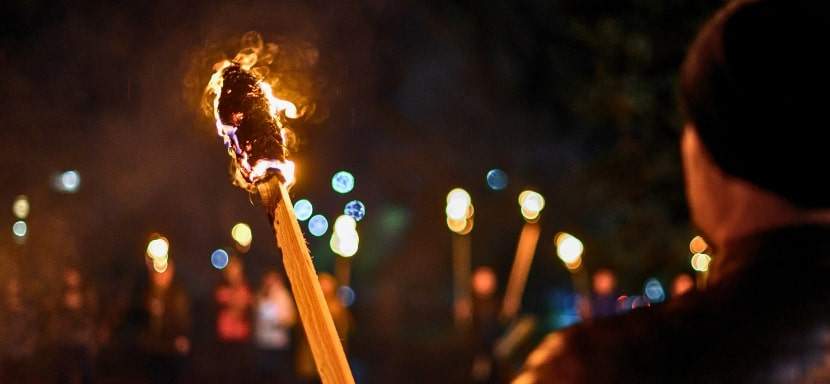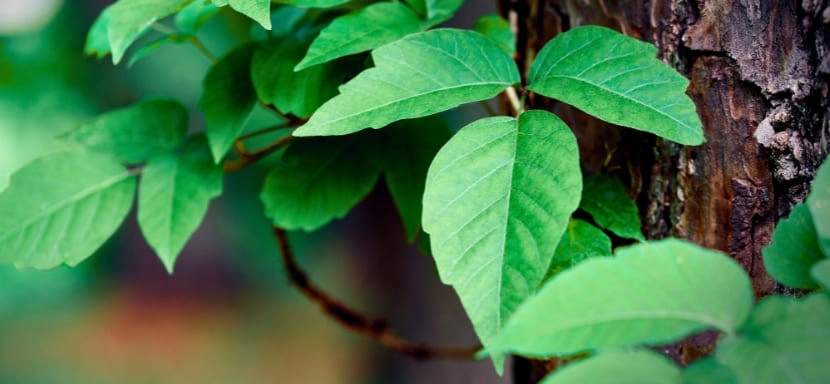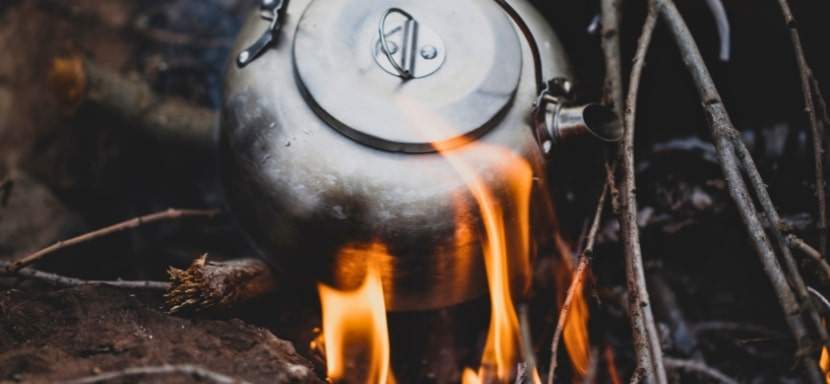How to Make a Torch for Light

Creating your torch for light is not only a practical skill but also a rewarding craft. Whether preparing for a camping trip, looking for a unique DIY project, or wanting a reliable light source for emergencies, making a torch can be an enjoyable and valuable endeavor.
My guide will walk you through the entire process, from gathering materials to lighting your torch, ensuring you have a dependable light source whenever needed.
Key Points
- Material Selection: Choosing the right materials is crucial for a durable and practical torch.
- Proper Assembly: Following detailed steps ensures a well-constructed torch that burns efficiently.
- Safety First: Always prioritize safety when making and using your torch.
Materials Needed for Your Torch
To make your torch, you will need a few basic materials that can be easily found at your local hardware store or online. Here’s a list of the items you will need to gather before you begin your torch-making adventure:
- Wooden stick or dowel
- Cotton fabric strips
- Beeswax or paraffin wax
- Candlewick
- Scissors
- Saucepan
- Heat source (stove or campfire)
Gathering these materials will ensure you have everything necessary to create a functional and practical torch.
Choosing the Right Stick
When selecting a wooden stick or dowel for your torch, it is important to choose a sturdy and durable material that will hold up well when exposed to heat. Look for a stick that is straight and thick enough to hold the fabric strips and wax securely. You can also consider using a dowel for a smoother surface.
Best Wood to Use for a Homemade Torch
1. Hickory: Hickory is the top choice for making a homemade torch. It is known for its exceptional durability and density, making it highly resistant to breaking or splintering when exposed to heat. Hickory wood also burns steadily and evenly, providing a reliable, long-lasting light source.
2. Oak: Oak is another excellent option for torch-making. It is a strong, sturdy hardwood that can withstand high temperatures without deteriorating quickly. Oak wood is readily available and provides a stable and consistent burn, making it a reliable choice for homemade torches.
3. Ash: Ash is a good option for torches, although not as durable as hickory or oak. Ash wood is still relatively strong and lightweight, making it easy to handle and carry. It burns well and provides a decent amount of light, but it may not last as long as the harder woods listed above.
Once you have found the perfect stick, trim it to your desired length using a saw or sharp knife. The stick’s length will determine the overall size of your torch, so choose a length that feels comfortable for you to hold and carry.
Prepare the Cotton Fabric Strips
Next, you will need to cut the cotton fabric strips into manageable pieces that will soak up the wax and create the torch’s burning element. Cut the fabric into long strips wide enough to wrap around the stick and make a secure hold. You can also use multiple layers of fabric to ensure a longer burning time for your torch.
Before wrapping the fabric strips around the stick, trim any frayed edges or loose threads to prevent them from catching fire when the torch is lit. Properly preparing the fabric strips will result in a more efficient and safer torch overall.
Did You Know?
Ancient torches were often coated with pine resin or animal fat to extend the burn time and repel insects, showcasing early torch-making ingenuity.
Melt the Wax
Now, it’s time to melt the beeswax or paraffin wax to create the fuel source for your torch. Place the wax in a saucepan and heat it over a low flame until it is completely melted and has a smooth consistency. Stir the wax occasionally to ensure it melts evenly and does not burn.
Before dipping the fabric strips into the melted wax, test the temperature of the wax by dipping a small piece of fabric in and checking for the desired level of saturation. To avoid creating a messy torch, the fabric should be fully coated in wax but not dripping excessively.
Assemble Your Torch
Once the wax has reached the right temperature and consistency, it’s time to assemble your torch. Dip a fabric strip into the melted wax, coating the entire strip evenly. Allow any excess wax to drip off before wrapping the fabric around the stick in a spiral pattern.
Continue dipping and wrapping the fabric strips around the stick until the entire surface is covered with wax-soaked fabric. Leave a small section at the top of the stick uncovered as a handle for holding the torch.
Let the Torch Set
After assembling your torch, it’s important to let it set and dry thoroughly before lighting it. Place the torch in a cool, dry place and allow the wax to harden and solidify around the fabric strips. This process may take a few hours, so be patient and wait until the torch is fully set before using it.
Light Your Torch
With your torch fully set and ready to go, it’s time to light it up and enjoy the warm glow of your homemade creation. You can use a lighter or match to ignite the fabric strips at the top of the torch. Once lit, thee fabric will gradually burn and provide a steady light source for outdoor adventures or emergencies.
Remember to exercise caution when using your torch and never leave it unattended while burning. Make sure to keep a safe distance from flammable materials and always have a way to extinguish the flame if necessary. By following these safety precautions, you can enjoy the light from your torch without any worries.
FAQs
What type of wood is best for making a torch?
Sturdy hardwoods like oak or hickory are excellent choices for making a durable torch.
Can I use other types of fabric for the torch?
Cotton fabric is recommended because it absorbs wax well and burns steadily. Synthetic fabrics are not suitable as they can melt and produce toxic fumes.
How long will a homemade torch burn?
The burn time of a homemade torch depends on the wax used and the thickness of the fabric strips. Generally, a well-made torch can burn for an hour or more.
Is beeswax better than paraffin wax for torches?
Beeswax is a natural, eco-friendly option and burns cleaner than paraffin wax. However, paraffin wax is more affordable and widely available.
Can I reuse the wooden stick for another torch?
If the stick remains intact and undamaged after the initial use, you can clean off any residue and reuse it for a new torch.
What safety precautions should I take when using a torch?
Always supervise the torch while it’s burning, keep it away from flammable materials, and have a means of extinguishing the flame nearby, such as a bucket of water or a fire extinguisher.
Conclusion: How to Make a Torch for Light
Making your torch can be rewarding and practical, as it creates a reliable light source for various purposes.
By following the step-by-step guide outlined in this article, you can easily create a torch that will illuminate any situation. So why not try torch-making and experience the satisfaction of lighting your path with a torch of your creation?
Get ready to embrace the light from a torch and illuminate your world like never before.
Historical Facts About Homemade Torches
Homemade torches have played a vital role in various cultures and eras, providing light and protection in the darkness. From religious ceremonies in ancient Greece to the practical needs of medieval night watchmen, these torches were ingeniously crafted from available materials like cloth, oil, resin, and animal fat.
Here are some fascinating examples:
- Ancient Greek and Roman Torches were used during religious ceremonies and public events. They often featured cloth soaked in oil or pitch for extended burn times.
- Medieval Castle Lighting: This was commonly made from bundles of sticks dipped in tallow to illuminate dark castle hallways and chambers.
- Viking Torches: Crafted from birch bark and resin, these torchlights burn brightly and are resistant to wind and rain, making them ideal for seafaring journeys.
- Native American Pine Knot Torches: Pine knots rich in resin are used to create steady, long-lasting flames during nighttime activities.
- Mayan and Aztec Torches: These torches were made from reeds coated with natural rubber or resin, and they provided reliable light during ritualistic ceremonies.
- Medieval Night Watchmen: Carried flax torches soaked in oil to patrol streets after dark, ensuring public safety.
- Colonial American Torches: These were made from animal fat and cloth to light homes before the advent of candles and lanterns.
- Japanese Bamboo Torches: These are filled with oil and used during festivals and nighttime gatherings for a warm and steady glow.
- African Tree Resin Torches: Africans used tree resins to make torches, which served as illumination and insect repellent during nighttime hunts.
More Survival Tips and Advice

How to Protect Yourself From Insects in the Wild
There’s nothing like being out in the wild—birdsong echoing through the trees, the fresh scent of earth, and a deep sense of peace that makes you think, “Ah, this is what life is about.” But then comes the buzzing. Mosquitoes, ticks, and flies swoop in like uninvited...

How to Identify Poisonous Plants
Exploring the great outdoors can be incredibly refreshing, offering a chance to reconnect with nature and unwind from daily stresses. However, it also comes with its fair share of risks. Chief among them? Poisonous plants. These hidden hazards can turn a peaceful...

How to Use the Sun to Tell Time
Using the sun to tell time sounds like a Robinson Crusoe novel. Imagine being stranded on a desert island with no phone, clock, or sundial. You'd still have one incredibly reliable resource: the sun. It’s been doing its thing for billions of years, and by the looks of...

How to Purify Water Using Boiling
When you're miles away from civilization, lost in the wilderness, or don't trust what's coming out of your tap, the idea of pure, clean drinking water starts to sound like a mythical oasis. Maybe it's all those survival shows you've binged, but suddenly, you're eyeing...

How to Build a Faraday Cage
Have you ever had one of those moments when your phone seems to be on its own personal field trip through Wi-Fi signals, Bluetooth, and all kinds of electromagnetic noise? Well, I have. The endless hum of invisible waves flying through the air makes you wonder—how can...
More Survival Scenarios

How to Survive a Layoff
When the Floor Falls Out: The Reality of a Layoff Layoffs feel personal—even when they're not. One day, you're responding to Slack messages and forwarding emails. Next, you're staring at your monitor as it logs you out... for good. Whether it's a restructuring, a...

How to Survive a Drug Test
The Cup, The Room, The Truth I never imagined I’d be so emotionally invested in a paper cup. But there I was, standing under the fluorescent hum of a strip-mall clinic, trying to recall the last time I ate a poppy seed bagel. That’s the thing about drug tests—they...

How to Survive an Interrogation
If you've ever been caught in the crosshairs of an overly enthusiastic mall cop or stared down by someone in a uniform with a clipboard and a glare, you’ve felt it — the chilly fingers of interrogation anxiety. And while most of us imagine interrogation scenes as...

How to Survive a Nightclub Shooting
Nightclubs pulse with life—lights flashing, music pounding, bodies packed tight on the dance floor. It’s a place to escape, feel the rhythm, and lose yourself in the crowd. But that same energy can turn deadly in seconds, transforming a night of fun into one of the...

How to Survive a Bachelor Party
A bachelor party is a delicate mix of celebration, chaos, and questionable decision-making, wrapped in the noble intention of sending the groom off into married life with a night he’ll (hopefully) remember. It’s a ritual as old as time—well, as old as men deciding...

How to Survive Your First Time at the Gym
Walking into a gym for the first time can feel like stepping into an alien world. The machines hum with purpose, the regulars move confidently, and you’re left standing there, clutching your water bottle, wondering whether you’re in the right place—or on the right...

How to Survive a Worldwide Communications Breakdown
Imagine waking up to silence. Your phone doesn’t buzz, your email won’t load, and even your local radio station crackles with static. A worldwide communications breakdown has hit. What next? For many, this doomsday scenario may sound like the opening lines of a...

How to Survive a Flash Flood While Driving
Surviving a flash flood while driving requires quick thinking, calmness, and a solid plan to ensure your safety. Preparation can make all the difference between a close call and a catastrophe in emergencies like this. This guide provides practical advice to protect...

How to Build an Emergency Kit
Emergencies don’t knock politely at the door. They barge in, uninvited, like a distant relative with a penchant for drama, turning your world upside down without warning. Whether it’s a power outage, a natural disaster, or an unexpected evacuation, the key to staying...

How to Protect Yourself From Insects in the Wild
There’s nothing like being out in the wild—birdsong echoing through the trees, the fresh scent of earth, and a deep sense of peace that makes you think, “Ah, this is what life is about.” But then comes the buzzing. Mosquitoes, ticks, and flies swoop in like uninvited...
